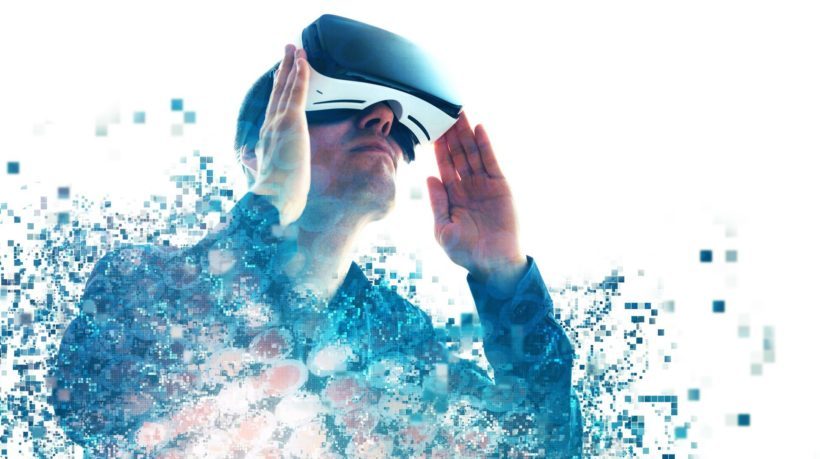How Immersive Onboarding Benefits Mentors
Immersive onboarding is the newest attempt at polishing the employee onboarding experience. Rather than simply running new hires through a list of company policies or having them watch a training video, immersive onboarding incorporates eLearning, hands-on activities, and face-to-face interactions into a cohesive program.
For mentors, immersive onboarding allows them to connect with new hires in a more meaningful way. Less time is spent on making small talk or answering questions that could easily be found on the company website, and as a result, more time can be spent discussing the employee's individual strengths, weaknesses, and goals.
Are you interested in upgrading your organization's onboarding process? Let's explore the benefits of immersive employee onboarding and how mentors can get involved.
Why Employee Onboarding Matters
You may be wondering—why bother to make the onboarding experience immersive in the first place? After all, the new hire is just going to have a lot of paperwork to complete and some training modules to slog through. Won't they learn everything they need to know on the job?
Actually, research shows that quality onboarding can make a big difference in terms of employee productivity and engagement. Take a look at these key statistics:
- A great onboarding process improves retention by 82%.
- Of the employees who go through a high-quality onboarding program, 77% meet their initial performance goals.
- 78% of employees say they would be more inclined to stay with a company that offers a great onboarding experience and a clear career progression path.
- If an onboarding experience is poor, 25% of hires will leave within the first year.
Clearly, the onboarding experience is a make-or-break moment for new hires. That's why it's so important to invest in a well-designed, immersive program that provides employees with the tools they need to be successful on the job.
How Mentors Benefit From Immersive Onboarding
Mentors are a key component of the onboarding process—and they make a real difference. In fact, 56% of new hires say they prefer onboarding programs that assign a mentor or "buddy" to help with the transition.
When mentors are tasked with running new hires through stacks of paperwork and company policies, however, their involvement in the process can be minimal. With immersive onboarding, mentors can have a more significant impact on the new hire's experience and success.
Immersive onboarding allows for a more personal connection between mentor and new hire, which builds trust and helps the new employee feel comfortable asking questions. In addition, mentors can provide valuable insights about the company culture and how to navigate the politics of the workplace.
With immersive onboarding, mentors can also be more hands-on in terms of training and development. They can help new hires get up to speed on their new job duties and identify any areas where they may need additional support.
Overall, mentors can play a critical role in the success of new hires—and immersive onboarding provides the perfect opportunity for them to shine.

Prostock-studio/Shutterstock.com
Strategies For Immersive Employee Onboarding
When most people think of immersive onboarding, they picture a new employee in a VR headset, exploring a simulated world that mirrors the company's actual operations. While this type of experience is growing in popularity, there are other ways to create an immersive onboarding experience.
Let's take a look at some of the most effective strategies for immersive employee onboarding.
eLearning Courses
Online learning modules have earned a pretty bad name for themselves thanks to outdated software and poorly written content. However, when done well, eLearning can be a very effective way to immerse new employees in the company culture and teach them the basics of their new job.
eLearning courses can be tailored to specific roles within the company, and they can include videos, interactive simulations, and quizzes. They can also be customized to the new employee's level of experience so that everyone, from recent graduates to experienced professionals, can benefit from them.
- Types of eLearning
eLearning modules have been around for many years, so we are fortunate to have a fairly solid idea of what works and what doesn't. Here are the four main eLearning formats:
1. Classic eLearning is educational material delivered and leveraged through technology. It's an umbrella term that incorporates all types of learning, including computer-based training (CBT), online learning, and digital learning.
2. Microlearning is much like eLearning, except topics are delivered in short, snappy segments. This type of learning is great for reinforcing new information and keeping learners engaged.
3. Virtual Instructor-Led Learning (VILT) takes place in a virtual classroom setting. The instructor is live, and learners can interact with both the instructor and other students.
4. Social learning provides a way for colleagues to collaborate and share knowledge. This type of learning is often informal, and it can take place in a variety of locations, including social media, discussion boards, or wikis.
- Which eLearning method is best?
The answer to this question is "it depends." Different methods work better for different learners, and it's important to find the format that will engage your employees the most. If you're not sure which format to choose, start with a classic eLearning course and see how your employees respond. You can then add microlearning modules or VILT courses to keep learners interested and engaged.
Explainer Videos
Another strategy for immersive employee onboarding is to create explainer videos. These videos can be used to introduce new employees to the company culture, teach them the basics of their new job, and explain how the company works.
Explainer videos are a great way to engage visual learners, and they can be used to communicate complex information in an easy-to-understand way. Plus, they're a great way to show off the company's culture and values.
Topics you might want to cover in an explainer video include:
- Company history
- The company's mission and values
- The products or services the company offers
- How the company works (including the organizational structure, key processes, and main goals)
- What it's like to work at the company
- The company's culture and values
For mentors, using video saves you a ton of time. You can send a video link to the protégé, who can then watch the video at their leisure and ask questions about anything they do not understand when meeting in person.
Blended Learning
Because everyone has a different learning style, one of the most effective ways to onboard employees is through blended learning. This approach combines different methods of learning, such as eLearning courses, Instructor-Led Training, and social learning to create a well-rounded onboarding experience.
This type of onboarding is ideal for new employees who are already familiar with the basics of their job. It allows them to learn more about the company and its culture while also giving them the opportunity to ask questions and get feedback from their peers and instructors.
Here are a few ideas for incorporating blended learning into your onboarding program:
- Assign new employees a mentor who can help them learn about the company and answer any questions they have.
- Have new employees complete an eLearning course on the company's history, products, and services before starting their job.
- Give new employees a task to complete and then discuss it with an instructor or mentor.
- Urge new employees to use social media to connect with their peers and ask questions about the company.
By designing a program that is tailored to the individual, you can create an onboarding experience that is both immersive and effective.

Bartek Szewczyk/Westend61
360 VR
Finally, the most physically immersive strategy is to use VR technology in onboarding. This is especially useful if your new hire is completing their onboarding process remotely.
With VR, employees can explore a simulated version of the company's actual operations. They can also meet their colleagues and learn about the company's culture in a fun and engaging way.
Some companies are even using VR to allow new employees to tour the office before they start working. This is a great way to help new employees feel comfortable and excited about starting their new job.
Which Method Is Best?
There's no one-size-fits-all when it comes to creating an onboarding process, but immersive methods by nature are more engaging and tailor-made than more traditional methods, so any of the above-listed strategies are bound to be an improvement.
If you are a company with lots of remote hires, VR might be a useful way to conduct orientation. However, not all businesses have the budget for this. Blended learning tends to be more popular because it allows for greater flexibility and keeps new hires engaged.

Stokkete/Shutterstock.com
Common Killers Of Immersive Onboarding
When putting together your immersive onboarding program, there are plenty of approaches you can take—and there are also a number of common pitfalls you'll want to avoid.
Lack Of Preparation
One of the most common killers of immersive onboarding is a lack of preparation. This can manifest in a number of ways but often comes down to failing to provide new hires with the necessary tools and resources they need to be successful.
Without the necessary context or background information, it can be difficult for employees to hit the ground running and get up to speed quickly.
To avoid this, make sure to prepare thoroughly and provide all the necessary information and resources up front. This might include things like job aids, onboarding checklists, contact information for key team members, or other resources that can help employees get up to speed quickly.
Lack Of Engagement
If employees feel disconnected or disengaged from the onboarding process, it can lead to a lack of buy-in and a reluctance to learn. This can be particularly harmful in an immersive onboarding program, where new hires are expected to learn a lot in a short period of time.
Your best bet for avoiding this is to make sure your onboarding program is engaging and relevant. Consider pairing your new hires with buddies or mentors, and make sure you have a variety of activities and learning opportunities to keep things interesting.
Lack Of Structure
A loose and unstructured onboarding process can be confusing and overwhelming for new hires, leading to a feeling of being out of control. Such a lack of control can be particularly harmful in an immersive onboarding program, where new hires are expected to learn a lot in a short period of time.
Always make a point of providing a clear structure and timeline for your onboarding program. Not only will this help new hires know what to expect, but it will also help them stay on track and avoid feeling overwhelmed.
Lack Of Support
One of the biggest benefits of an immersive onboarding program is the support it provides new hires. However, if this support isn't there, it can lead to frustration and a sense of isolation.
Make sure you have a dedicated support team in place to help new hires transition smoothly into their new roles. This might include things like mentorship programs, onboarding check-ins, or other forms of support that can help employees feel connected and supported.
By keeping these pitfalls in mind as you design your immersive onboarding program, you'll be well on your way to creating a successful and effective experience for your new hires.
Final Thoughts
Are you looking for a way to improve your employee onboarding process? If so, consider implementing an immersive program. Immersive onboarding can be an extremely effective way to help new hires get up to speed quickly, and by avoiding the common pitfalls we've outlined above, you can ensure that your program is a success.
Remember that mentors can't properly do their job if they are weighed down by ineffective onboarding practices. If you want to onboard mentees successfully, free your mentors up to do what they do best: develop relationships and help your protégés grow their skills.










